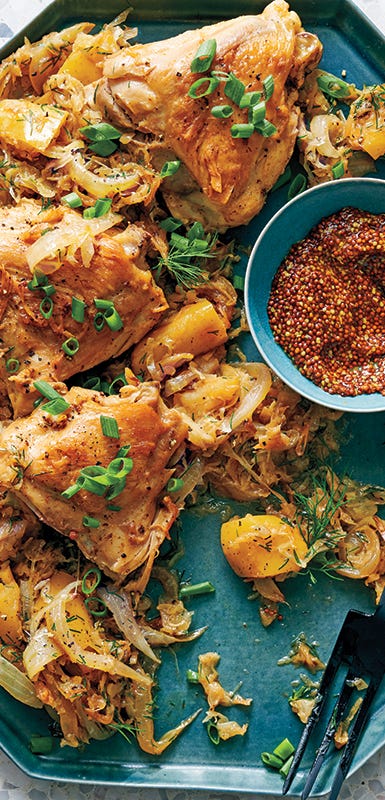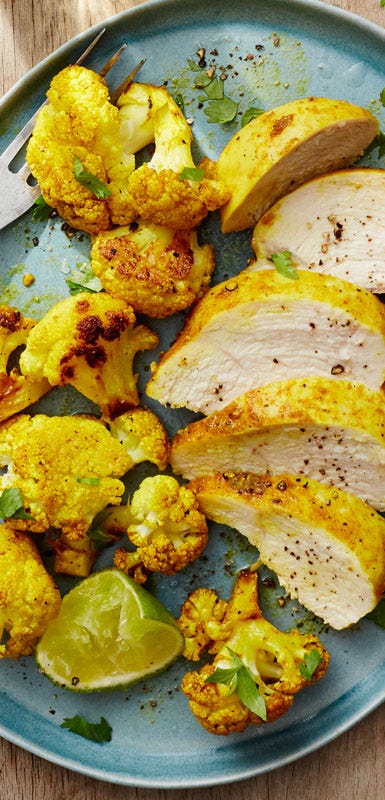42 ways to enjoy September’s best fruits and veggies


September is a big month for change: we’re saying goodbye to the beach and pool, it’s back-to-school time for much of the U.S., and the weather is a little nutty—one day you’re wearing shorts, the next day you’re breaking your sweaters out of a storage bin. Thankfully, the farmers’ market is still full of in-season bounty! Read on for ways to cook with some of the month’s freshest produce, including grapes, cauliflower, and (of course!) apples.
Apples
Nothing says fall like crisp, juicy apples. If you’re lucky enough to pick your own, look for apples that are firm, unblemished, and twist easily off the tree. Store-bought apples should have a fresh, lightly floral fragrance. Avoid any that seem bruised or overripe; they’ll produce higher levels of ethylene, a gas that hastens the ripening of fresh produce.
Keep apples in a cool area of your kitchen if you plan to use them within a few days. For longer storage, place them in a sealed plastic bag and refrigerate them, separate from other produce, for up to several weeks. Wash apples well before eating. If you’ve cut them up, stop them from browning by brushing them with lemon or orange juice.
Apples are an excellent source of fiber and vitamin C. Almost half of an apple’s vitamin C, and most of its fiber, are found in the skin, so eat them unpeeled for maximum nutritional benefit.
Our Best Apple Recipes
Cauliflower
Though this cruciferous vegetable is available year-round, its peak season typically begins in September. Look for heads of cauliflower with tightly packed florets and fresh green leaves. Avoid any with blemishes or soft spots. While white cauliflower is most common, green, yellow, orange, and purple cauliflower are starting to become more mainstream.
Refrigerate unwashed cauliflower in a plastic bag in your vegetable bin for four to five days. Wash well before trimming and cutting into florets or steaks, ricing, or cooking whole. Don’t toss the leaves—they are delicious roasted.
Cauliflower is rich in vitamin C and is also a good source of folate and vitamin B6.
Our Best Cauliflower Recipes
Grapes
Grapes come in a wide variety of colors and flavors, and new varieties like Cotton Candy grapes and Gummy Bear grapes seem to crop up each year. Purchase plump, firm grapes that are still firmly attached to the stem, which is a sign of freshness.
Store grapes, unwashed, in a perforated plastic bag in the refrigerator for up to one week.
Grapes have a lot of health benefits: They are a good source of potassium and vitamin C, and one cup of grapes contains about ¼ of the daily recommended amount of vitamin K. The skin of red grapes is especially nutritious since it’s packed with heart-healthy antioxidants.










































